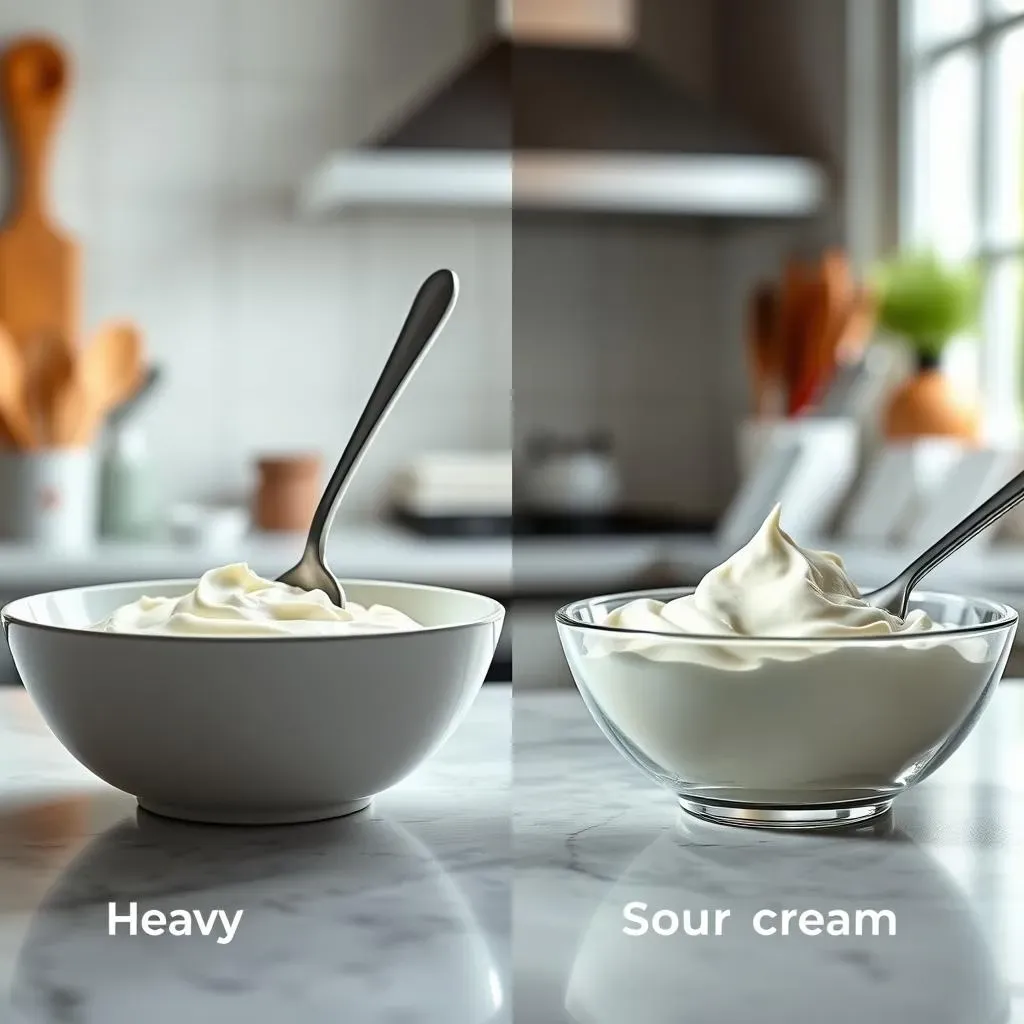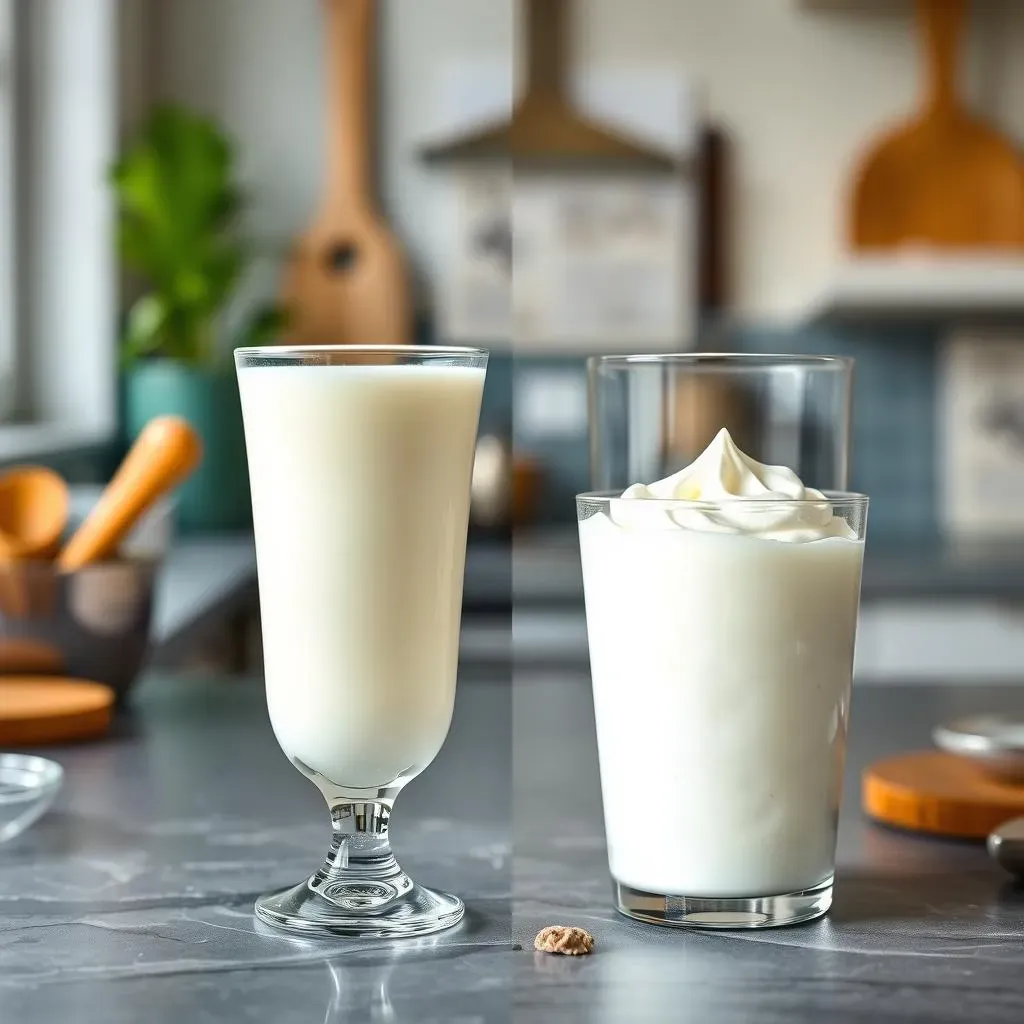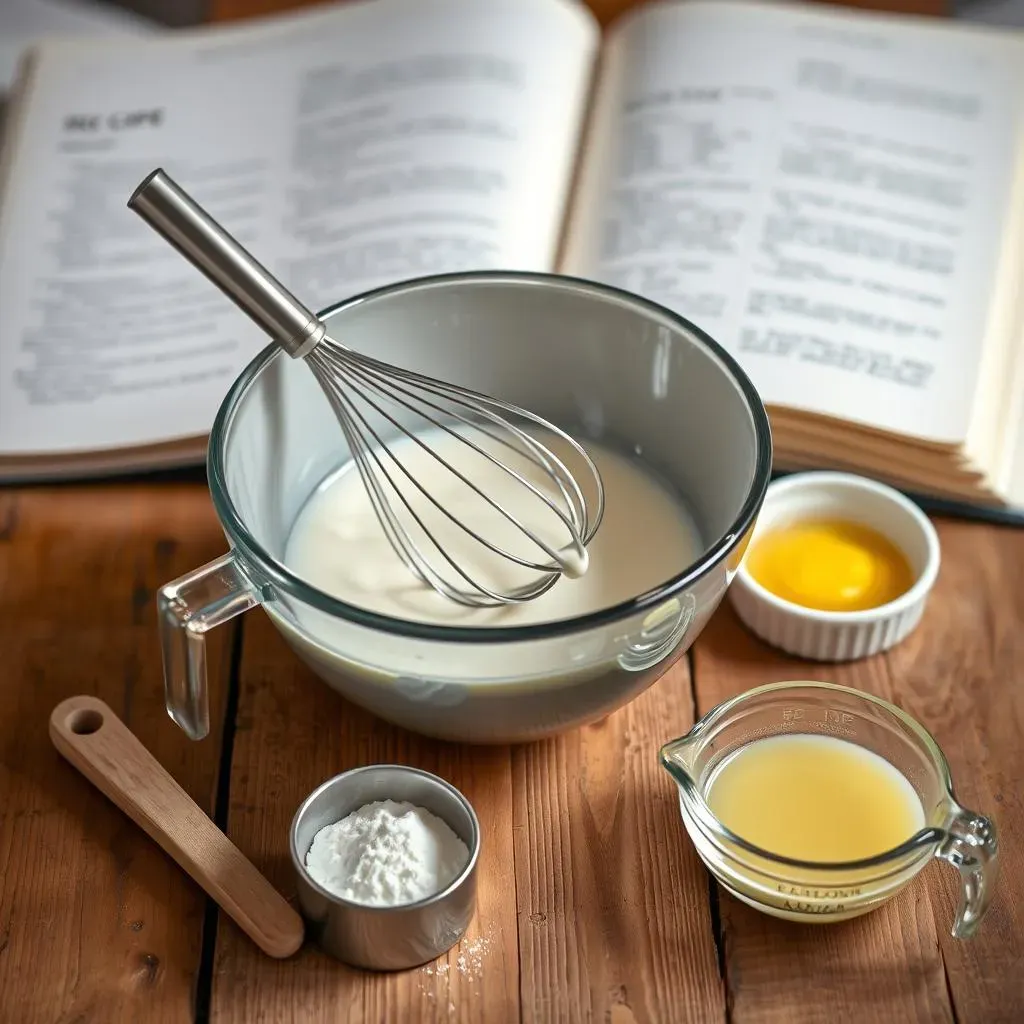Table of Contents
Ever stared blankly into your fridge, recipe in hand, only to discover you're out of sour cream? That sinking feeling is familiar to many home cooks. But before you abandon your culinary dreams, let's explore a creamy question: can you substitute cream for sour cream? This article dives into the heart of this common cooking conundrum. We'll unpack the key differences between cream and sour cream, examining their texture, flavor profiles, and fat content. Understanding these distinctions is crucial for making successful substitutions. We'll then delve into practical tips and tricks, guiding you through various scenarios where swapping cream for sour cream works – and where it might not. By the end, you'll be armed with the knowledge to confidently tackle any recipe, regardless of your sour cream supply. Prepare to become a substitution savvy chef, transforming kitchen emergencies into culinary triumphs! Let's get started!
Can You Substitute Cream for Sour Cream? Exploring the Possibilities

Can You Substitute Cream for Sour Cream? Exploring the Possibilities
The Great Sour Cream Shortage
Let's face it, we've all been there. You're whipping up a batch of your famous potato soup, or maybe a decadent cheesecake, and you realize – horror of horrors – you're out of sour cream. The pantry's looking a little bleak, but you do spy a carton of heavy cream lurking in the back. Is it a viable replacement? The short answer is: it depends. The long answer? Well, that's what we're here to explore!
Substituting ingredients is a common culinary challenge, and understanding the nuances of each ingredient is key. Cream and sour cream, while both dairy products, have distinct properties. Think of it like this: sour cream is like the sophisticated, cultured cousin of cream. It has a tangy bite and thicker consistency due to the fermentation process. Cream, on the other hand, is smoother and sweeter, with a higher fat content.
Ingredient | Fat Content (approx.) | Texture | Flavor |
|---|---|---|---|
Heavy Cream | 36% | Thick, rich | Sweet, buttery |
Sour Cream | 20% | Thick, tangy | Tart, slightly acidic |
When Cream Can Stand In
In some recipes, heavy cream can actually work surprisingly well as a sour cream substitute. Think creamy soups or sauces where the tang isn't the star of the show. The richness of the cream will add a luxurious mouthfeel, and you might even find the slightly sweeter flavor complements the other ingredients. However, it's crucial to keep in mind that the lack of acidity might alter the final flavor profile. You might need to add a squeeze of lemon juice or a dash of vinegar to mimic sour cream's signature tang.
However, don't even think about using cream as a direct swap in baking. Sour cream plays a vital role in the texture and rise of many baked goods. Its acidity interacts with the leavening agents, impacting the final product's structure. Substituting cream will result in a flatter, denser cake or muffin, a culinary tragedy of epic proportions.
- Soups (Creamy Tomato, Potato etc.)
- Certain Dips (e.g., Spinach Artichoke, where other flavors are strong)
- Some Sauces (but adjust for acidity)
The Bottom Line: Proceed with Caution
While you *can* sometimes use cream instead of sour cream, it's not a one-size-fits-all solution. The success of your substitution hinges on understanding the specific role sour cream plays in your recipe. If it's a crucial ingredient affecting texture or flavor, it's best to stick with the original ingredient or seek a more suitable alternative like plain yogurt or crème fraîche. Always remember, culinary experimentation is encouraged, but informed experimentation is even better. So, before you swap, think, and then maybe swap!
Consider this quote from a renowned chef (let's call him Chef Extraordinaire): "Know your ingredients, my friend. Substitution is an art, not a reckless act. Experiment, but always with purpose and a dash of common sense."
Cream vs. Sour Cream: Understanding the Differences for Successful Swaps

Cream vs. Sour Cream: Understanding the Differences for Successful Swaps
Dissecting the Dairy Duo
So, you're ready to tackle cream versus sour cream? Fantastic! Let's get down to the nitty-gritty. The core difference boils down to this: sour cream is cultured cream. That means friendly bacteria have been added to cream, transforming its flavor and texture. This fermentation process gives sour cream its characteristic tanginess and thicker consistency. Think of it as cream with a personality upgrade!
Cream, on the other hand, is simply the fatty part of milk that's been separated. It's naturally sweeter and smoother, lacking the sharp tang of its cultured cousin. Heavy cream, in particular, boasts a significantly higher fat content, contributing to its rich, luxurious texture. It's the decadent heavyweight champion of the dairy world.
Characteristic | Heavy Cream | Sour Cream |
|---|---|---|
Fat Content | 36% or higher | Around 20% |
Texture | Thick, smooth, pourable | Thick, slightly chunky, spreadable |
Flavor | Sweet, buttery | Tart, tangy, slightly acidic |
Cultures | None | Bacterial cultures |
The Acidity Factor: A Key Distinction
The acidity of sour cream is a game-changer, especially in baking. This tanginess reacts with baking soda or powder, creating a chemical reaction that helps baked goods rise. Replacing sour cream with plain cream in a recipe expecting that rise will result in a flat, dense disaster. The lack of acidity in cream simply won't trigger the same leavening action.
However, in savory dishes, the acidity might be less critical. Think creamy soups or sauces where other strong flavors are present. The richness of the cream can still provide a delicious mouthfeel, even without the sour cream's tang. However, you might want to experiment with adding a touch of lemon juice or vinegar to compensate for the missing acidity in these cases. Taste as you go – that's the key to culinary success!
- Always consider the recipe's primary goal: texture or flavor?
- Acidity is essential in many baked goods; cream won't cut it there.
- Savory applications offer more flexibility for cream substitutions.
Mastering the Substitute: Tips and Tricks for Using Cream in Place of Sour Cream

Mastering the Substitute: Tips and Tricks for Using Cream in Place of Sour Cream
The Art of the Swap: Successful Cream Substitutions
Okay, so we've established that a direct swap isn't always the best approach. But fear not, aspiring culinary magicians! With a little finesse, you can often achieve delicious results using cream in place of sour cream. The key lies in understanding the recipe's needs and adjusting accordingly. Think of it as a culinary puzzle – you're not just replacing one ingredient, you're re-engineering a flavor profile.
- Adjust for Acidity: Sour cream's tang is vital. If your recipe relies on it for flavor balance, add a squeeze of lemon juice or a splash of white wine vinegar to your cream substitute. Start small and taste as you go!
- Thicken It Up: Cream is generally thinner than sour cream. If your recipe needs thickness, consider adding a tablespoon or two of cornstarch or flour to the cream before incorporating it into your dish. This will help achieve a similar consistency.
- Mind the Fat Content: Heavy cream is very rich. If the recipe calls for a lighter sour cream, you might want to dilute your heavy cream with a little milk to reduce the richness and achieve a better texture.
Case Studies in Cream Substitution
Let's look at some specific examples. In creamy tomato soup, the richness of heavy cream can actually enhance the flavors, creating a luxuriously smooth texture. However, you'll likely want to add a touch of acidity to balance the sweetness of the cream. In a spinach artichoke dip, the other bold flavors can mask the lack of sour cream's tang. Experimenting with different types of cream can also lead to interesting results. For instance, using half-and-half instead of heavy cream might provide a lighter texture in certain recipes.
Recipe Type | Cream Type | Adjustments |
|---|---|---|
Creamy Tomato Soup | Heavy Cream | Add 1 tsp lemon juice per cup of cream |
Spinach Artichoke Dip | Heavy Cream or Half-and-Half | May not require adjustments, depending on other ingredients |
Certain Sauces | Heavy Cream or Half-and-Half | Add 1 tbsp cornstarch per cup of cream for thickening; adjust acidity as needed |
When to Say No to the Swap
It's crucial to acknowledge the limitations. Cream simply can't replicate sour cream's role in many baked goods. The chemical reaction between sour cream's acidity and leavening agents is essential for structure and rise. Substituting cream in cakes, muffins, or quick breads will likely result in a flat, dense, and disappointing outcome. In these cases, sticking to sour cream or exploring alternative substitutes like plain yogurt is the wiser culinary path.